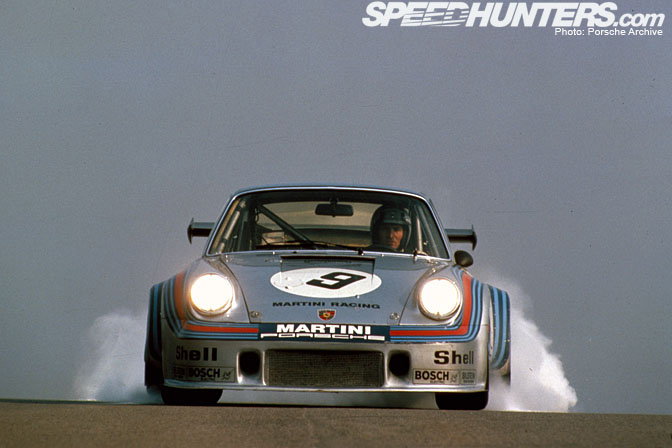

A Walk on the Wild Side
In the field of motoring certain technological advances become associated with a particular brand, Audi Quattro for instance or Porsche Turbo.
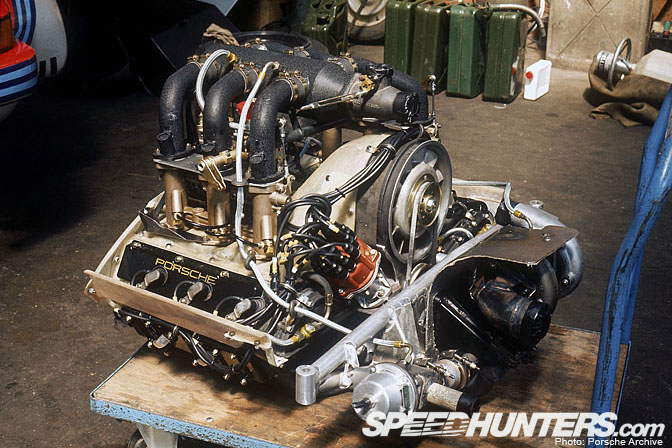
Porsche Turbo, ah yes……… the image that springs to mind is that of a 911 as muscular as body builder and like any truly wild animal never fully domesticated. Fail to treat one of these cars without proper respect and at best it will be quick trip to the hedgerow.
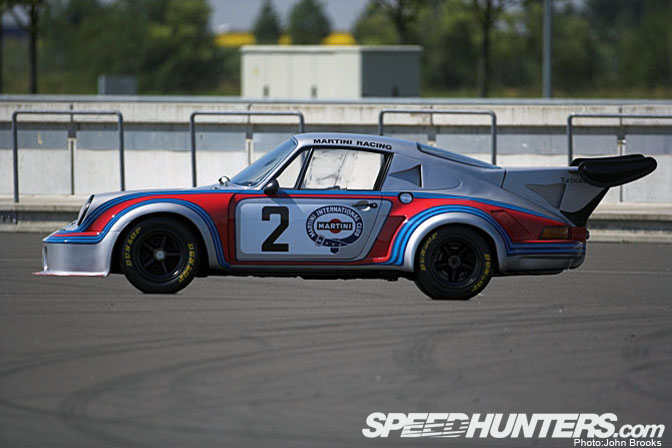
Where did this road going beast come from? Like most things from old school Porsche, it was born out of competition. Back in the early 70s the CSI (the FIA’s sporting arm) put out a proposal that the new breed of prototypes to replace the existing bunch would be based around a silhouette formula, so the basic shape of a road car with technical freedom under the skin.

Porsche looking first to replace the 908/917 prototypes in Europe and then to match the Can-Am 917 programme in North America were, as ever, quick off the mark.
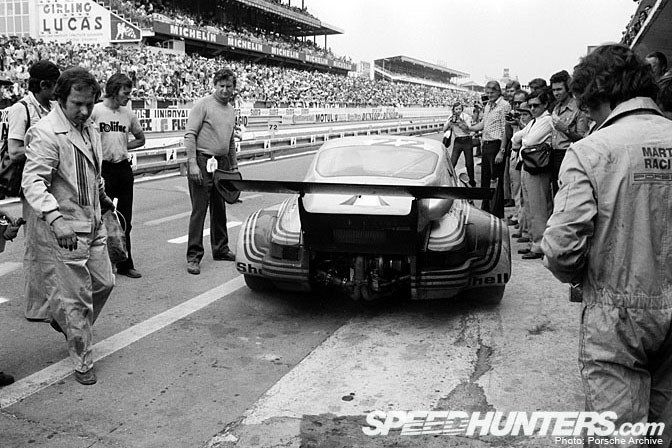
The move towards racing a 911 that could be readily identified with the road going models was given approval by the new CEO, Dr Fuhrmann, who got Norbert Singer to head up the project.
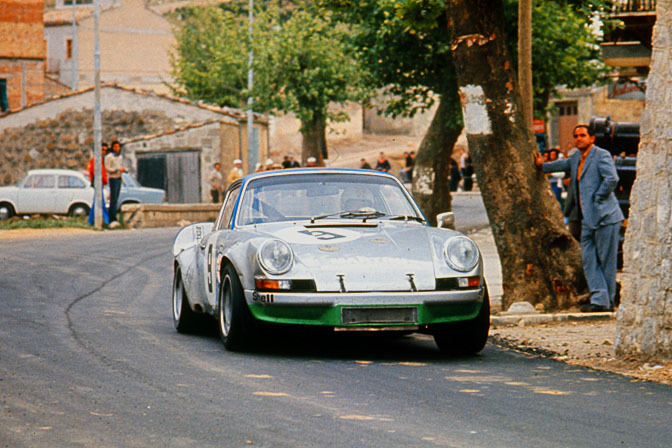
Initially the heavily modified 911 RSR’s engine was normally aspirated and in this format scored a notable outright victory in the 1973 Targa Florio outrunning and outlasting the faster prototypes from Ferrari and Alfa Romeo. Here is the sister car of Leo Kinnunen and Claude Haldi on the way to third overall.
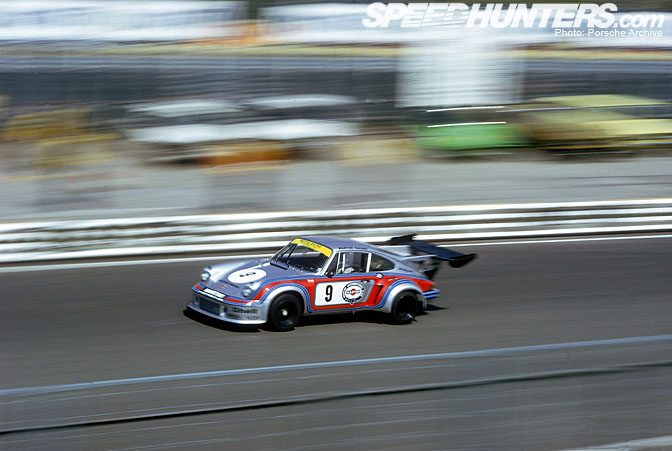
The energy crisis and the economic downturn of the time put paid to scrapping the existing prototype categories, there would have been nothing but the Porsche to replace them. So plans were drawn up to create a development of the rules to bring in Group 5 (heavily modified GTs) and Group 6 (out and out open prototypes similar to the existing cars) for the 1975 season.

Porsche decided to make a virtue out of a necessity and created the wild 911 Carrera RSR Turbo for the 1974 season. A new version of the flat-six air cooled engine using a single KKK turbocharger to increase the power.
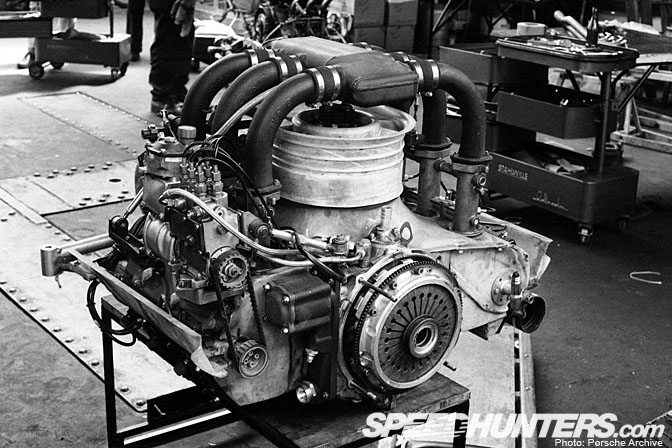
At a nominal capacity of 2,142 cc (the FIA applied a multiplication of 1.4 to engines with forced induction, in a formula with a 3-litre limit) the engine developed between 460 and 490 horsepower, depending on boost pressure.
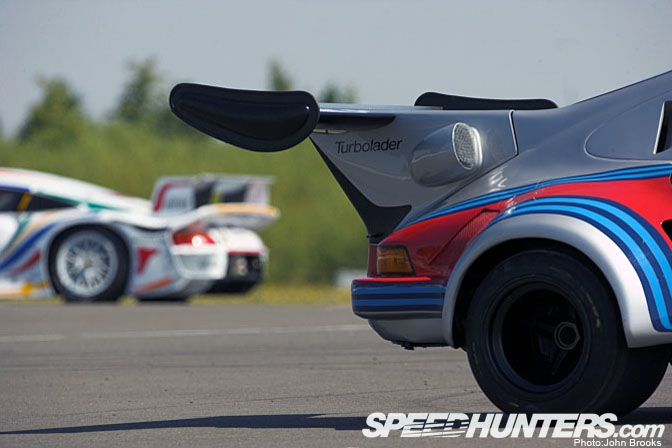
Comprehensive weight saving measures reduced the scrutineering weight on the 911 Carrera RSR Turbo to 825 kg, impressive for a steel monocoque production car but still 175 kg heavier than the Matra V12 prototypes that dominated the 1974 season.
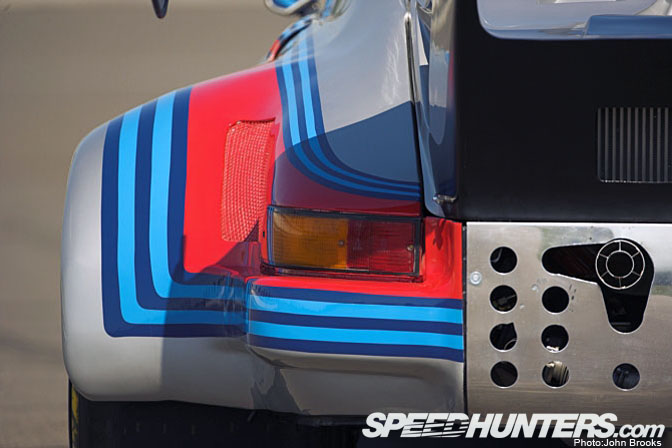
The most radical departure was a new rear spaceframe with coil sprung suspension and titanium springs (in place of the RSR’s torsion bar arrangement). In addition the fuel tank was moved out of the front to a new location amidships, giving consistent weight distribution during a stint.
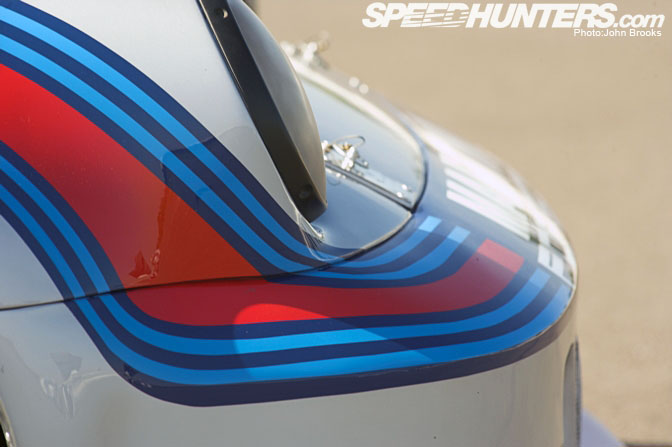
The RSR Turbo was the most extreme 911 by far, its huge rear spoiler and bulbous wheel arch extensions giving it an unforgettable appearance. The 17 inch wide rims added to illusion of power. The rear spoiler unit housed five NACA ducts to assist engine cooling. A flush rear window smoothed air flow to the spoiler whilst at the front, a deep wraparound air dam featured ducts for the oil and intercoolers.
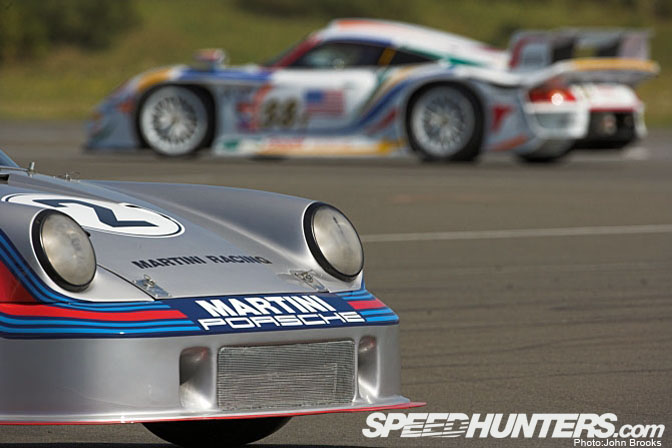
So much for the specification what is the car like in real life? And how did it perform on the track?
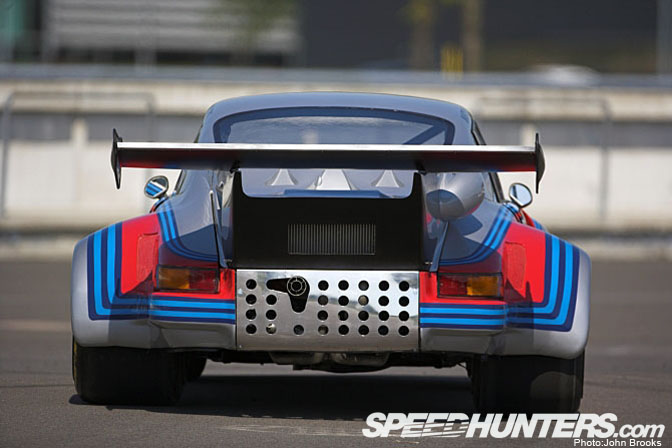
Well as the regular readers will know, Rod, Antonio and I visited the Porsche Factory and facility at Leipzig and we were given a personal presentation of a couple of cars by the legendary designer and engineer, Norbert Singer. One of these was the RSR Turbo and Rod had the video camera turned on, this film is something to look forward to in this Porsche month.
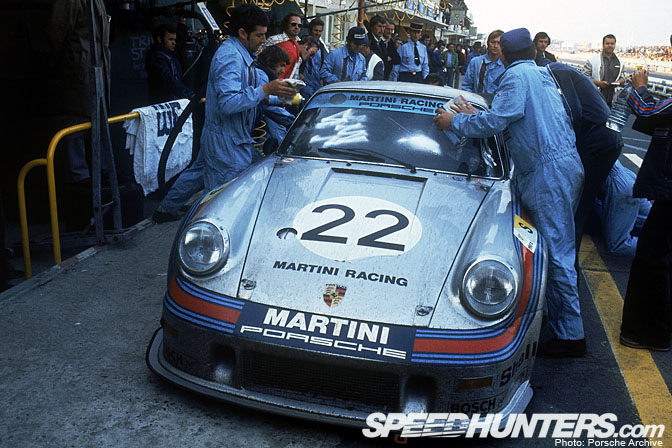
In the flesh the Martini colours and the extended body contours fit each other perfectly, the stir this machine would have caused down the pit lane would have been considerable. Oddly enough I did not see it race myself, 1974 was a thin year for me and sportscars, not sure if was booze or birds or perhaps both that preoccupied me at that time.
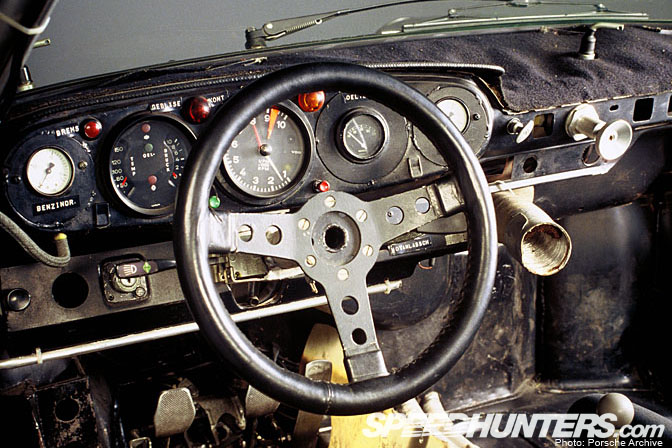
Like all racers from that era the cockpit seems absurdly primitive by today’s standards, really rough and ready. It never seemed to worry the drivers, all they would be concentrating on was keeping the beast in some sort of control.
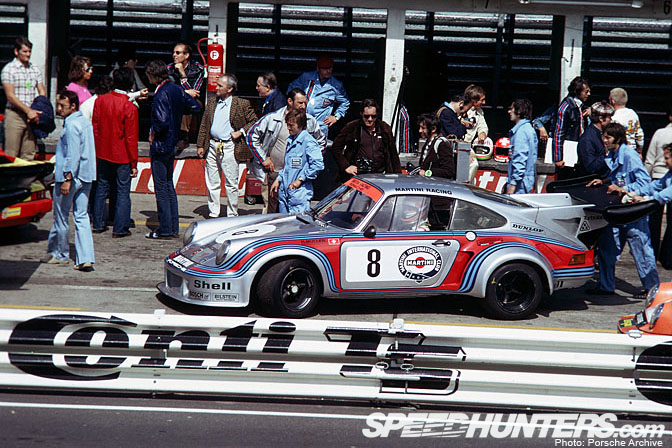
And they did that to great effect, despite running a road based vehicle against full on prototypes from Matra, Alfa Romeo and Mirage.
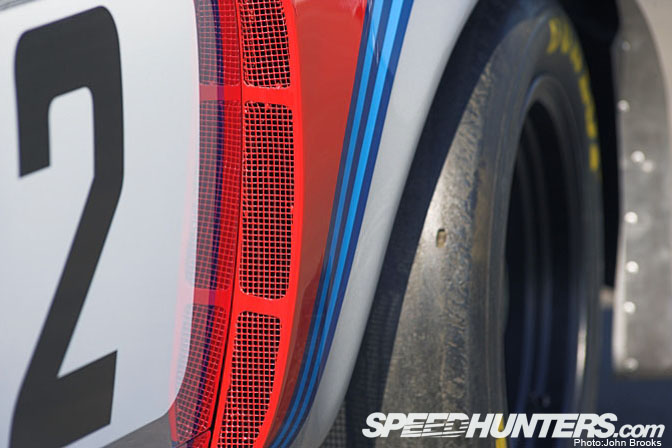
The high point as might be expected came at Le Mans 24 Hours where Gijs van Lennep and Herbert Müller were able to claim their best result of the season, second overall, to Henri Pescarolo’s Matra. To prove that this was no fluke the duo claimed a third place at Spa 1000ks.
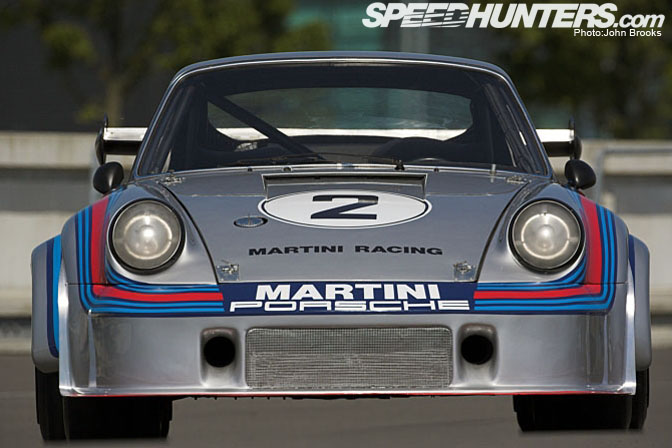
The RSR Turbo was an important development stage for both road and track. The developments on the track led to the 935 era that carried endurance racing in Europe and North America for the next 6 years or so. On the road Porsche pushed on with their turbo 911 which paved the way for others to use turbo technology in their cars, today it is common place.
-John Brooks






Always loved those ultrawide rear fenders
What a feature. Thanks John. I love that Targa winning car.
where has this website been all my life?
sweet jesus... what a piece of car!
It's a shame now that "9 11" now has a different meaning to most people. (especially living in NYC) Awesome shots, capturing the sexiest parts of my favorite car and what could be called one of the most famous liveries in racing history.
absolutely amazing!
Please bring the 935," I wrote in my email to the Porsche representative; I very much wanted to
Awesome Feature... can we have desktops please?
One of the cooler things we did while on we were on the Speedhunters Euro Trip was visit the Porsche